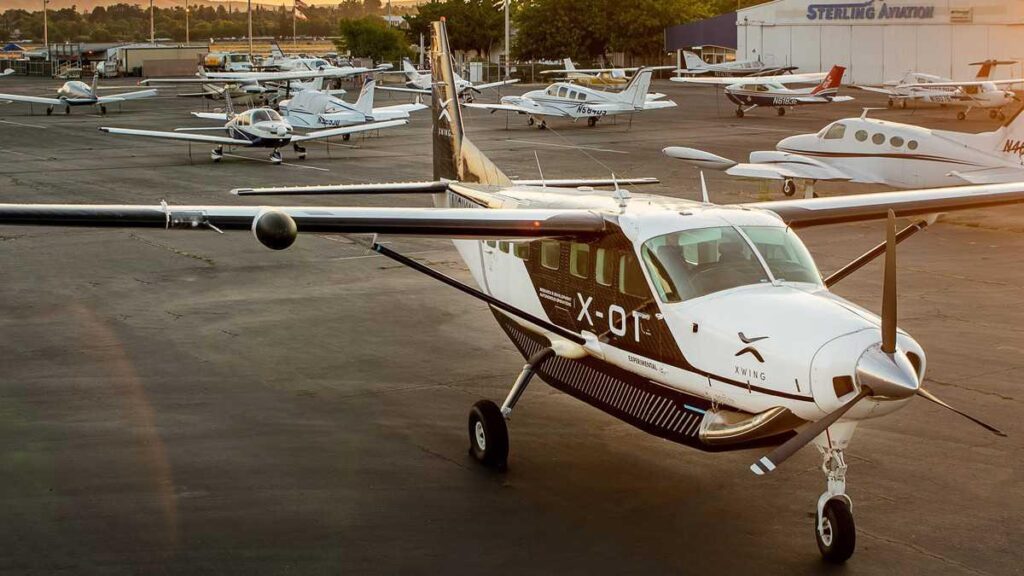In a groundbreaking display of aviation technology, a Cessna aircraft recently completed a remarkable journey covering over 3,900 miles without a pilot at the controls. This test flight, organized by the United States Air Force, showcased the potential of autonomous flight in military operations. The successful completion of this mission marks a significant milestone in the development of unmanned aerial vehicles and their role in modern warfare.
Revolutionizing Military Aviation: Autonomous Cessna Successfully Completes 3,900-Mile Test Flight
The groundbreaking achievement of an autonomous Cessna successfully completing a 3,900-mile test flight has the potential to revolutionize military aviation as we know it. The unmanned aircraft, equipped with cutting-edge technology, flew from Cape Canaveral, Florida to California’s Golden Gate Bridge with precision and efficiency.
This milestone marks a significant advancement in autonomous flight capabilities and underscores the Air Force’s commitment to innovation. The successful completion of this long-distance test flight paves the way for future developments in unmanned aerial vehicles (UAVs) and showcases the incredible potential of autonomous technology in the field of military aviation.
Cutting-Edge Technology: Details of the Unmanned Aircraft Used in the Air Force Experiment
The recently conducted Air Force experiment showcased the incredible capabilities of autonomous aircraft, with a Cessna successfully completing a record-breaking flight spanning over 3,900 miles. Equipped with cutting-edge technology, the unmanned aircraft navigated through various terrains and weather conditions with precision and efficiency.
The use of artificial intelligence and advanced sensors allowed the autonomous Cessna to make real-time decisions, adapt to changing environments, and complete its mission with minimal human intervention. This successful test marks a significant milestone in the development of unmanned aerial vehicles for military applications, showcasing the potential for autonomous aircraft to revolutionize the way the Air Force conducts operations in the future.
Implications for the Future: How this Test Flight Could Shape the Future of Air Force Operations
The successful test flight of an autonomous Cessna covering over 3,900 miles has significant implications for the future of Air Force operations. This historic achievement demonstrates the potential for unmanned aircraft to play a key role in a variety of missions, offering new capabilities and opportunities for the Air Force.
By showcasing the long-distance capabilities of autonomous aircraft, this test flight paves the way for enhanced surveillance, reconnaissance, and transportation missions. The data collected from this flight will inform future development and implementation of autonomous technologies, shaping the future of Air Force operations for years to come.
Recommendations for Incorporating Autonomous Aircraft into Military Strategies
Autonomous aircraft have revolutionized military strategies, providing efficient and effective options for surveillance, reconnaissance, and even combat missions. Incorporating these advanced technologies into military operations requires careful planning and implementation to maximize their capabilities. Here are some recommendations for integrating autonomous aircraft into military strategies:
- Invest in Research and Development: Constant investment in research and development is essential to stay ahead in the autonomous aircraft technology race. This will ensure that the military has access to the latest advancements and can leverage them effectively in operations.
- Enhance Interoperability: It is crucial to ensure that autonomous aircraft can seamlessly integrate with existing military systems and technologies. This will enable better coordination and communication between different assets, enhancing overall operational effectiveness.
Wrapping Up
the successful test flight of the autonomous Cessna over 3,900 miles marks a significant milestone in the future of aviation technology. With its ability to gather crucial data and perform complex missions without human intervention, the possibilities for its applications in the Air Force and beyond are endless. This groundbreaking achievement demonstrates the potential for increased efficiency, safety, and effectiveness in aerial operations. As we look forward to the continued development of autonomous aircraft, we can only imagine the exciting possibilities that lie ahead.


